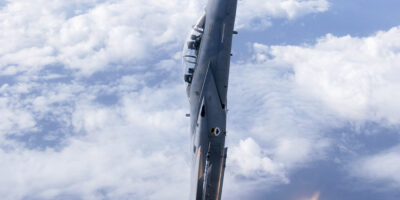P-40 Crash in Montana
P-40 Crash in Montana
The P-40 Warhawk, a World War II-era American fighter aircraft, holds a prominent place in aviation history. This single-engine aircraft, with its robust design and combat performance, contributed significantly to the Allied war effort. Yet, its history includes not just heroic tales, but tragic incidents as well. One such event is a P-40 crash that occurred in Montana, shedding light on both the aircraft’s complexities and the challenges of wartime aviation.
The P-40 Warhawk
Manufactured by Curtiss-Wright Corporation, the P-40 Warhawk first took flight in 1938. It was renowned for its durability and versatility. The Warhawk served in various roles, including air superiority, ground-attack, and even reconnaissance missions.
The aircraft featured a powerful Allison V-1710 V-12 engine, capable of producing up to 1,150 horsepower. This gave the P-40 a maximum speed of approximately 360 mph (580 km/h). Armed with an array of machine guns and capable of carrying bombs, it was a formidable adversary.
One of the P-40’s distinctive features was its shark mouth nose art. This decoration, popularized by the American Volunteer Group known as the “Flying Tigers,” became synonymous with the aircraft.
Deployment and Service
The P-40 saw extensive service in various theaters of World War II. Notably, it played a crucial role in the North African Campaign and in the defense of China against Japanese forces. Its rugged design allowed it to operate from primitive airstrips and withstand harsh combat conditions.
Approximately 13,738 P-40s were built, used by several Allied air forces, including the Royal Air Force, the Soviet Air Force, and the Royal Australian Air Force. Its service continued through the end of the war, although it was eventually eclipsed by more advanced fighters like the P-51 Mustang.
The Crash in Montana
In January 1943, a P-40 Warhawk based at Great Falls Army Air Base in Montana tragically crashed during a routine training flight. The pilot, Second Lieutenant Leonard F. Zemo, was conducting an exercise to familiarize with the aircraft’s handling and performance.
The exact cause of the crash remains uncertain, but it is believed that mechanical failure played a significant role. Reports from the time indicate that the aircraft experienced engine trouble shortly after takeoff. Despite Zemo’s efforts to regain control, the P-40 descended rapidly and struck the ground.
Witnesses reported seeing smoke trailing from the engine, suggesting an internal malfunction. The rugged terrain of Montana posed additional challenges for emergency responders. The incident highlighted the risks associated with the high-performance aircraft and the demanding training programs of the era.
Investigation and Aftermath
The military initiated an investigation to determine the cause of the crash. Maintenance records were scrutinized, and surviving components of the aircraft were examined. The investigation concluded that a catastrophic engine failure led to the incident. Contributing factors included extreme weather conditions and the relative inexperience of the pilot.
Lessons from this crash informed subsequent training protocols and maintenance procedures. Emphasis was placed on rigorous engine inspections and improved pilot readiness. The incident served as a stark reminder of the inherent dangers of military aviation, particularly during wartime.
Legacy and Remembrance
Memorials for fallen pilots, including Second Lieutenant Zemo, were established to honor their sacrifices. The Great Falls community, deeply affected by the tragedy, held commemorative events to pay tribute to its local heroes.
The P-40 Warhawk remains an iconic symbol of World War II aviation. Its legacy endures through museum exhibits, air shows, and restored aircraft. Enthusiasts and historians continue to study its contributions and the challenges faced by those who flew it.
This incident in Montana, while a somber chapter, underscores the relentless pursuit of excellence and the indomitable spirit of those who served during one of history’s most turbulent times.
Recommended Aviation Gear
David Clark H10-13.4 Aviation Headset – $376.95
The industry standard for aviation headsets.
Pilots Handbook of Aeronautical Knowledge – $25.42
Essential FAA handbook for every pilot.
As an Amazon Associate, we earn from qualifying purchases.



Subscribe for Updates
Get the latest articles delivered to your inbox.
We respect your privacy. Unsubscribe anytime.